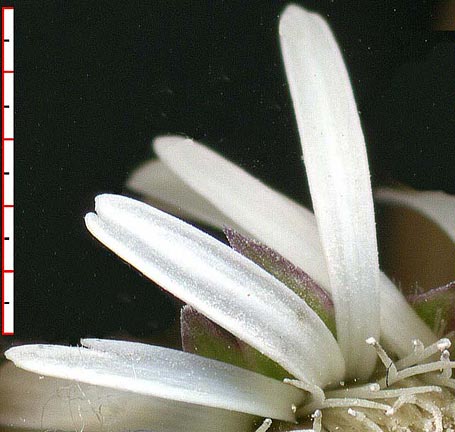
|
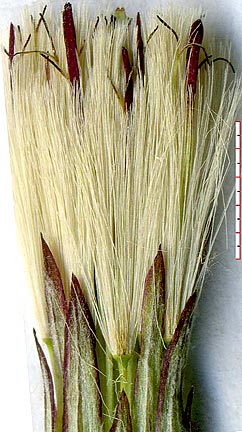
|

|
| Open–head with large ligules. | Closed–head with small, but visible, ligules. | Closed–head with reduced ligules |
|---|
Chaptalia texana Ligulate Pistillate Florets
by Bob Harms



|

|

|
| Open–head with large ligules. | Closed–head with small, but visible, ligules. | Closed–head with reduced ligules |
|---|

| floret length | corolla length* | pappus length | |||
|---|---|---|---|---|---|
| average | range | average | range | average | |
| open–head (type I) | 12.6 mm | 11-13.2 mm | same | 9.4 mm | |
| closed–head: type II | 11.4 mm | 10.2-12 mm | same | 12 mm | |
| closed–head: type III | 10.9 mm | 10-11.3 mm | 8.9 mm | 7.9-9.3 mm | 12.9 mm |
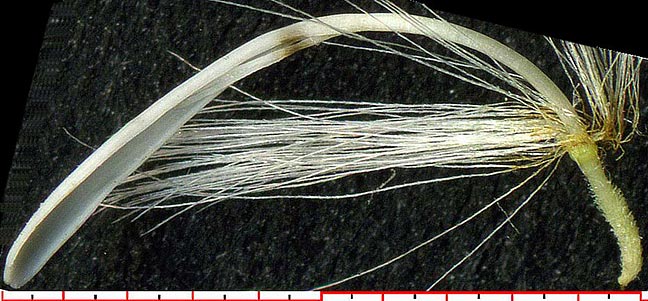

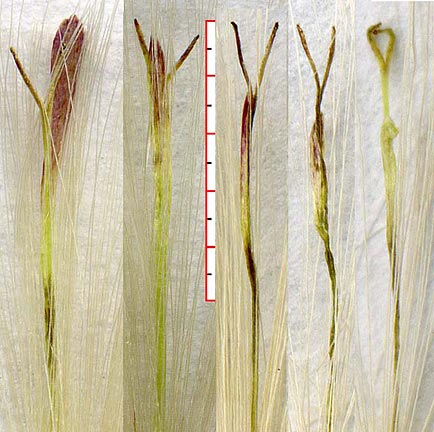
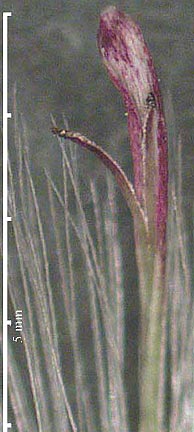
Variation among closed–head type II florets


closed–head type III highly reduced florets
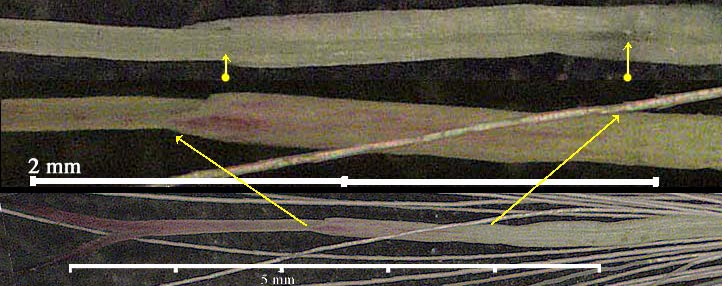
closed–head type III corolla almost reduced to filiform tube
